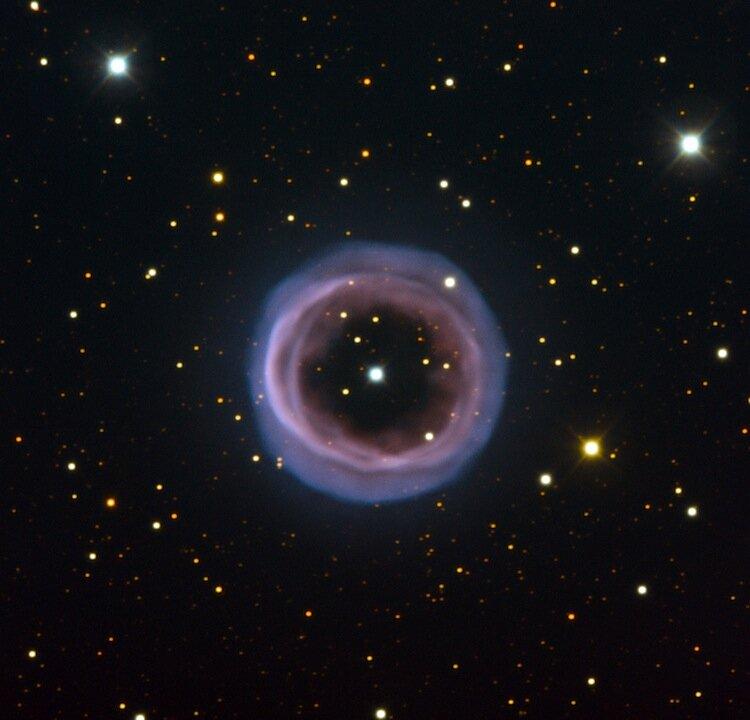When a dying star with a mass similar to our sun runs out of fuel, its center condenses into a white dwarf, and its outer layers shoot into space, generating an ionized shell of gas called a planetary nebula.
This planetary nebula is called the Fine Ring Nebula, also known as Shapley 1 after the American astronomer Harlow Shapley, who discovered it in 1936. It is located in the constellation of Norma, approximately 1,000 light-years away, and is about one-third of a light-year across.
Such nebulae have the appearance of giant planets, but actually occur around stars outside our solar system.
The stellar object at Shapley 1’s center is believed to be a binary system comprising the primary star and a companion star, orbiting it every 2.9 days.







